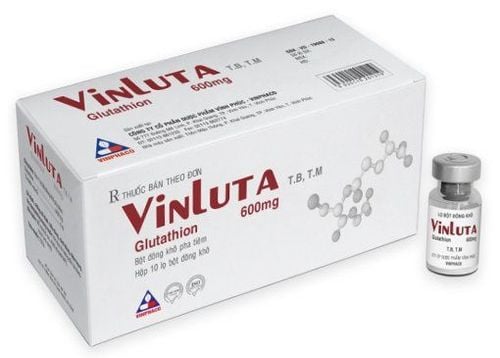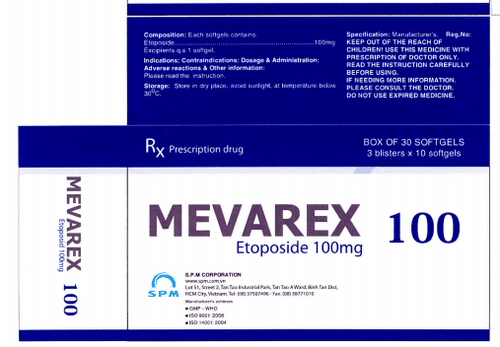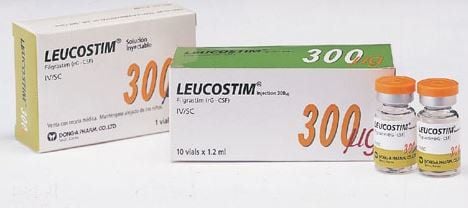This is an automatically translated article.
The article was professionally consulted by Dr., Doctor Le Tan Dat, Radiation Therapy Center - Vinmec Central Park International General Hospital.Not all cancers can be cured with stem cells. This method only plays a role in the treatment of certain types of cancer (mainly cancer of the hematopoietic system). When treating these cancers, chemotherapy and radiation therapy not only kill cancer cells, but also inadvertently kill stem cells in the bone marrow. Therefore, patients need a combination of stem cell transplant, also known as marrow transplant, to help restore or create new healthy cells.
1. Types of stem cell transplants for cancer treatment
After the end of chemotherapy or radiation therapy, new stem cells need to be injected into the patient's vein, similar to a blood transfusion (rather than a transplant such as a liver or kidney transplant), to replace the number of cells that have been destroyed. Over time, these infused stem cells gradually settle into the bone marrow (i.e. they "grow" in the bone marrow) and begin to grow, producing normal, healthy blood cells.Although there are several forms of cancer treatment with stem cell transplantation , they all fall into two main categories :
Autologous stem cell transplantation : Transplanting back the stem cells of the patient himself. Allogenic stem cell transplantation: Transplantation of stem cells from a relative or a suitable donor. 1.1. Autologous stem cell transplant In this form of stem cell cancer treatment, stem cells are taken from the patient's own blood or bone marrow before chemotherapy or radiation, and frozen. After the end of the treatment, the stem cells are thawed and transplanted (transfused) back into the patient's body.
Advantages
The biggest strength of autologous stem cell transplantation is that the patient can get his or her own cells back. Limit transplant rejection, no transplant cells attack the host body or infection from other people.
Cons
Sometimes stem cells cannot enter the bone marrow and regenerate blood as expected. Cancer cells that have escaped attack and overcome the patient's immune system before may do this again, resulting in a relapse of the disease. It takes time to remove the old cancer cells that are already present in the frozen marrow. This process can inadvertently destroy healthy cells, leading to an increased risk of infection or bleeding. Autologous stem cell transplantation is currently applied in the treatment of a number of diseases, including:
Group of cancers of the hematopoietic system, such as: Leukemia, lymphoma and multiple myeloma Some cancers belong to this group. solid tumors such as: testicular cancer, neuroblastoma, and some other childhood cancers. In addition, stem cell transplantation also has the potential to be applied in the treatment of a number of non-cancerous conditions. such as: Systemic sclerosis, multiple sclerosis (MS), Crohn's disease, and systemic lupus erythematosus. After the transplant, the patient may be prescribed anti-cancer drugs to remove all remaining abnormal cells in the body.
1.2. Double stem cell transplant (“tandem transplants.” “tandem” means “double bike”) This is a form of autologous stem cell transplant with 2 rounds of aggressive chemotherapy. Each transplant still uses the patient's own marrow source. All necessary stem cells will be harvested prior to the first high dose chemotherapy. Each transplant will then use half of these. Usually, the time for 2 transplants is within 6 months, the second time is done after the patient has recovered from the first stem cell cancer treatment.
Complementary transplantation is commonly used in the treatment of multiple myeloma and advanced testicular cancer. Sometimes, this technique is also performed after organ transplantation. However, doing two marrow transplants can be more dangerous than doing just one. Scientists are still working on how to optimize this method.
1.3. Allogeneic stem cell transplant
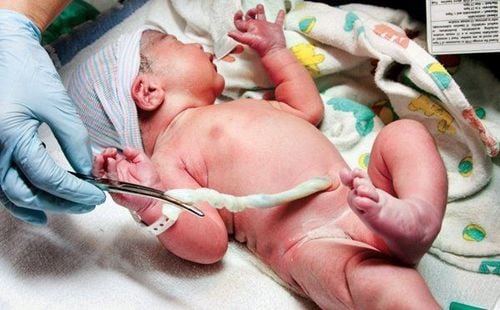
Advantages
Donor stem cells create a new immune system that can help destroy any cancer cells left in the patient's body after high dose chemotherapy or by radiotherapy. In addition, the donor can give the patient extra healthy white blood cells and no abnormal cells.
Cons
Donor stem cells can die or be destroyed in the patient's body before settling in the bone marrow. The new immune system from the donor can also attack the patient's healthy cells. This is called graft resistance (graft-versus-host disease). The risk of infection may occur even though the stem cells are checked before donating. If severe, it can lead to death. Allogeneic stem cell transplantation is commonly used in the treatment of a number of diseases such as leukemia, lymphoma, multiple myeloma, myelodysplastic syndromes and aplastic anemia.
1.4. "mini" stem cell transplantation (mini-transplants, or non-myeloablative transplantation) For older adults or unstable health conditions, "aggressive" treatment (chemotherapy) chemotherapy) to kill all marrow cells before a stem cell transplant is quite dangerous. In this case, the doctor will apply a "mini" stem cell transplant. This form uses less chemotherapy and/or radiation than standard implants. The goal is to kill some cancer cells, including part of the marrow, and suppress the immune system just enough for the new stem cells received from the donor to work.
After a period of parallel existence, the new stem cells gradually take over the bone marrow and replace the patient's own old stem cells. A newly formed immune system helps transplant recipients fight cancer.
The biggest advantage of mini implants is the use of lower doses of chemotherapy and radiation. However, this method is not effective for patients whose cancer has spread a lot in the body or the disease is growing too quickly. In addition, although the side effects from chemotherapy and radiation may be less than with conventional allogeneic transplants, the risk of graft-versus-host disease with these two forms of stem cell transplantation is the same.
1.5. Co-transplant (twins) This is a special type of allogeneic transplant that can only be performed when the patient has a twin or triplets.
The strength of co-transplant is that there will be no host resistance (graft-versus-host disease). Moreover, newly transplanted stem cells can ensure completely healthy, no residual cancer cells.
However, the new immune system is very similar to the old immune system of the recipient which is a disadvantage, because the ability to destroy all cancer cells and prevent them from recurring is quite low.

2. Stem cell sources
Stem cells used in stem cell transplant therapy can come from one of three sources:Bone marrow Bone marrow is the spongy fluid tissue located in the center of some bones, responsible for making blood cells. through the body. The pelvis (hip) is home to the most marrow and contains a large number of stem cells. To draw blood from the bone marrow, the procedure is similar to a small surgery. The removed marrow will be processed as: filtered, stored in a special solution and then frozen before transplanting into the patient. Currently, in stem cell transplantation, the method of obtaining stem cells from bone marrow is rarely used.
Blood from peripheral veins Normally, in peripheral blood, there are not many stem cells. However, it is possible to inject hormone-like substances that stimulate cell growth a few days before stem cell harvesting, allowing the stem cells to grow faster so that they can be harvested from peripheral blood ( This is the same as donating blood, but through a special extractor to get the stem cells.) Once harvested, the stem cells are processed, the number of cells is counted, and a decision is made whether a transplant can be performed. Sometimes it is necessary to harvest many times to get the required number of stem cells. During a patient transplant, stem cells are introduced into the body through a vein, similar to a blood transfusion.
Neonatal cord blood Blood taken from the placenta and newborn umbilical cord is a new source of stem cells for allogeneic transplantation. The large number of stem cells in the umbilical cord, although small, tend to multiply rapidly. But this source of stem cells has so far only been used in children because the number of cells is not enough to transplant an adult.
Currently, many stem cell transplant networks have built cord blood "banks" to be able to provide for cases where umbilical cord stem cells are needed (sometimes the person who stores their own blood). umbilical cord), as well as a “bank” of genotypic data of genotyped donors (donors) so that they can be asked to donate in case of need for allogeneic transplantation.
3. Stem cell transplant for cancer treatment at Vinmec Times City
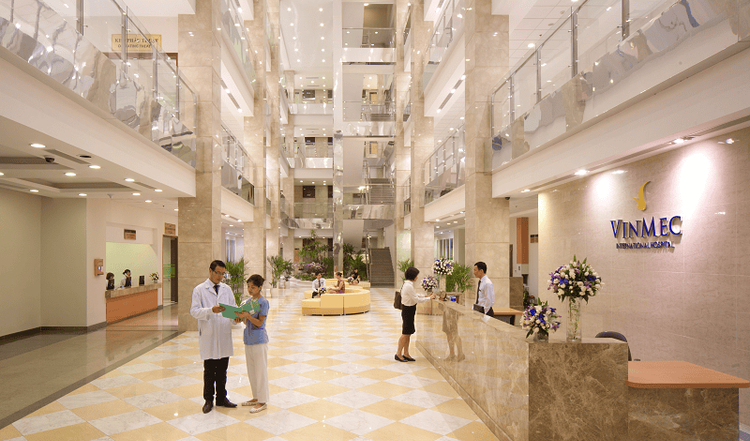
In addition to 5-star facilities, the Oncology Department of Vinmec Times City International Hospital also has its own special isolation room for hematopoietic stem cell transplant patients. The team of Associate Professors, PhDs, and Doctors here are all reputable people in the industry, highly specialized and experienced. In addition, Vinmec Times City also coordinates multi-specialty, comprehensive technical cooperation with domestic and international hospitals such as Singapore, Japan, USA, etc. to treat and care for patients with good quality. maximum efficiency.
Please dial HOTLINE for more information or register for an appointment HERE. Download MyVinmec app to make appointments faster and to manage your bookings easily.
The article references the source: cancer.org






